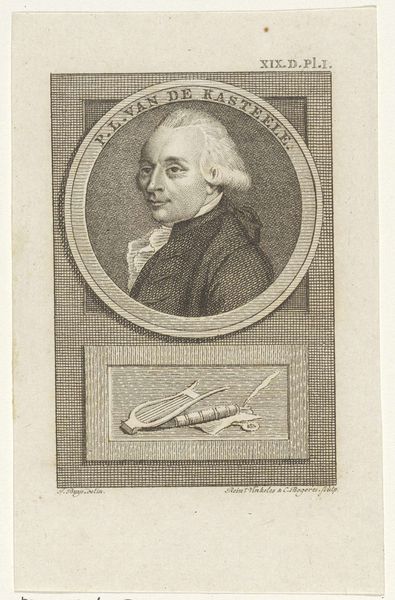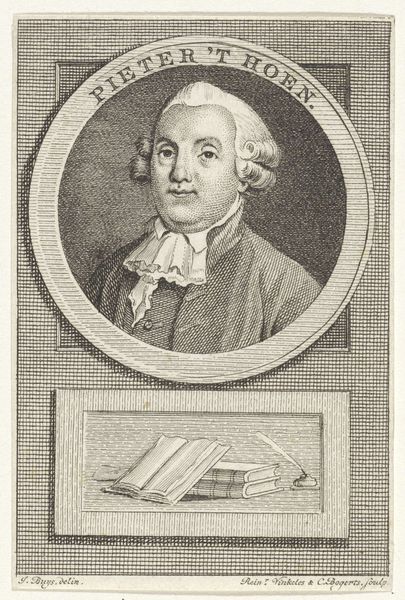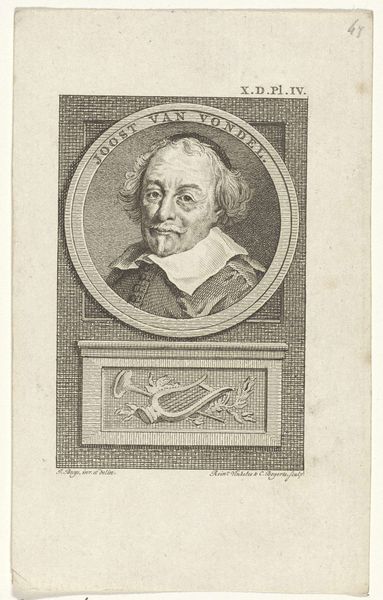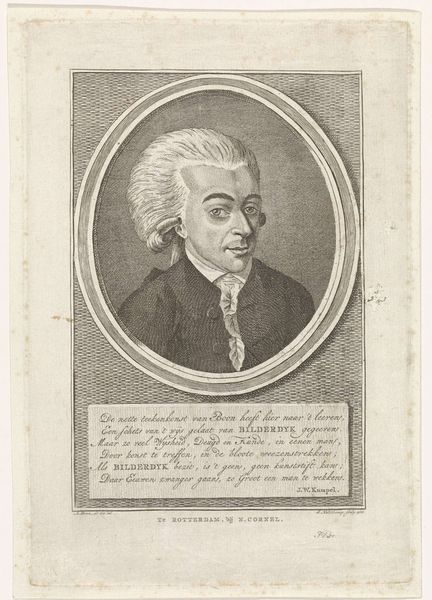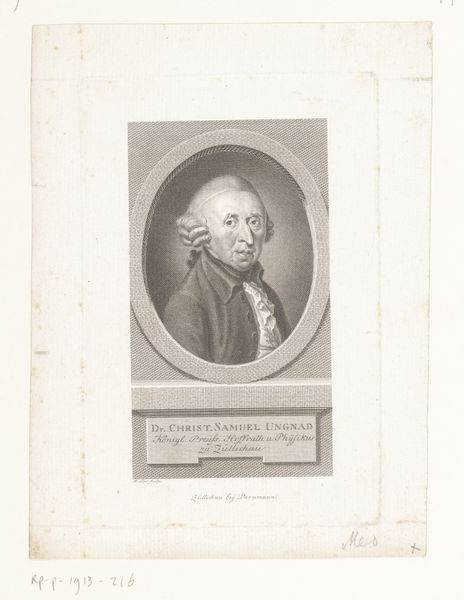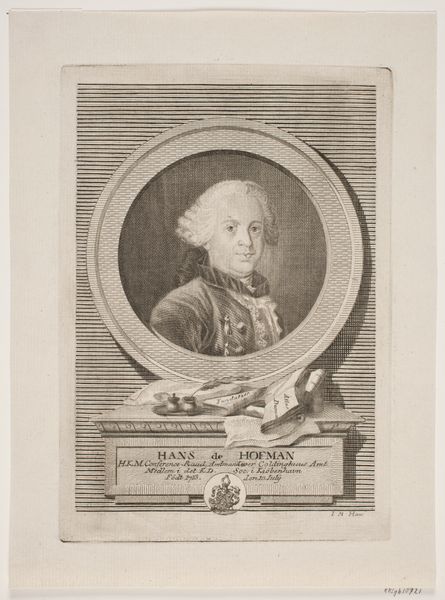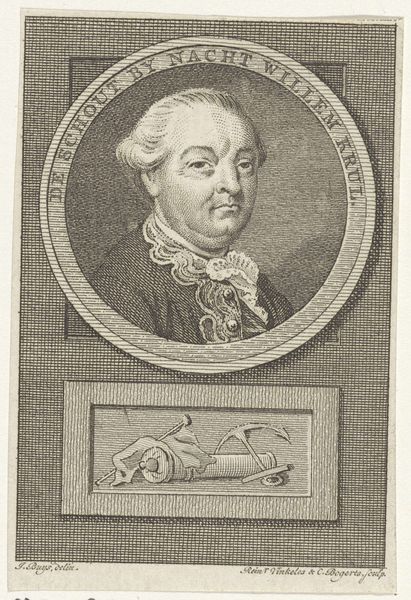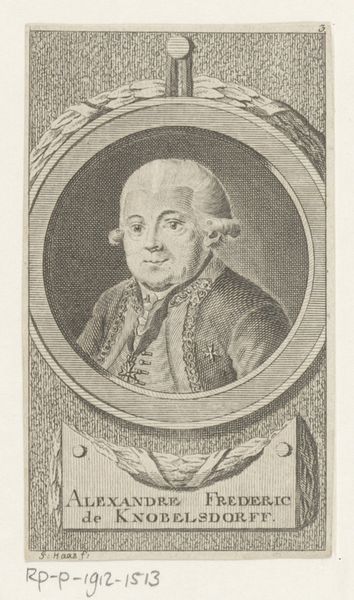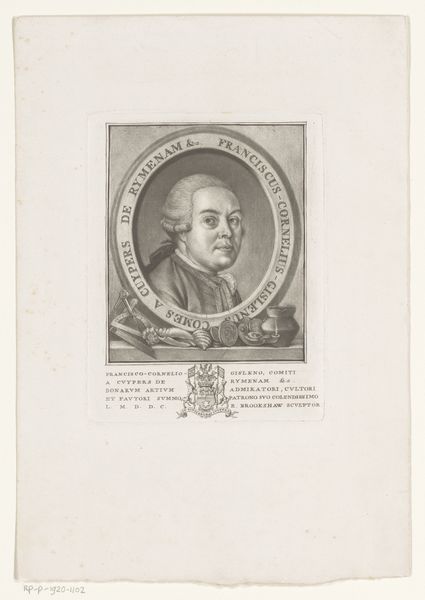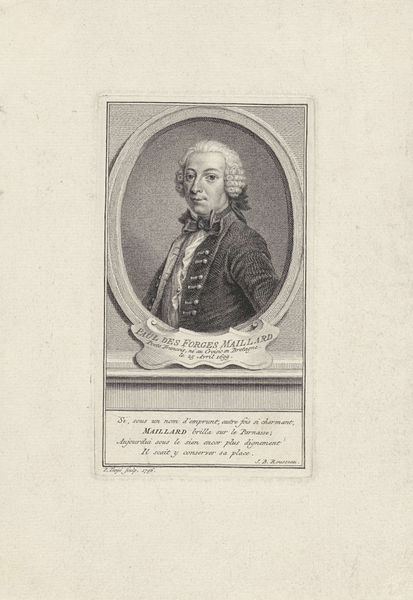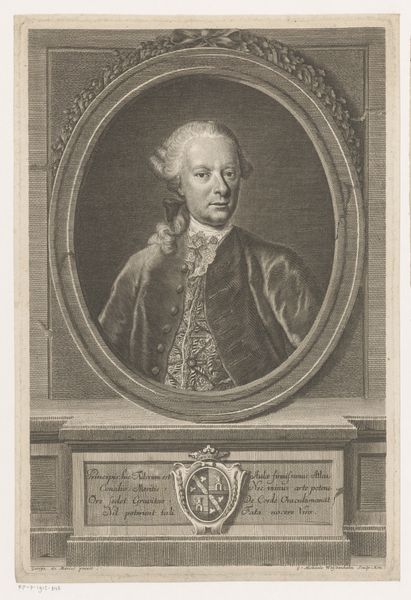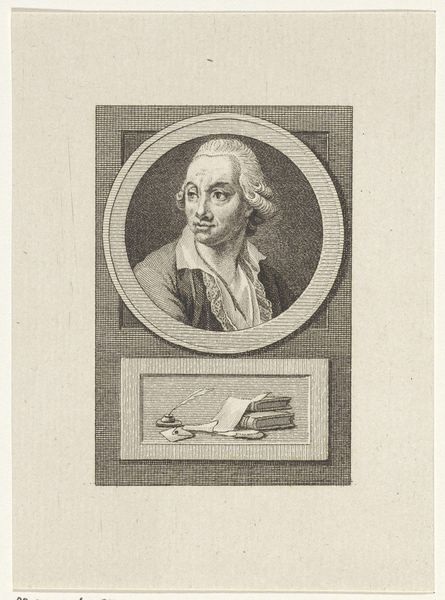
Dimensions: height 106 mm, width 75 mm
Copyright: Rijks Museum: Open Domain
Editor: This is "Portret van Paulus Gevers," an engraving by Reinier Vinkeles, created sometime between 1783 and 1795. It's striking how formal and stately it feels, but also a bit severe. What symbolic weight do you think the imagery carries here? Curator: The arrangement itself suggests a particular order. Notice the portrait is placed above what seems to be weapons. Do you think that positioning is accidental? The portrait within a circle above the tableau with the sword, possible arrows. Editor: Not accidental at all. Perhaps it suggests that Paulus Gevers’s role—likely as an authority figure given the inscription—is somehow tied to the protection and defense implied by those weapons. Curator: Precisely. This wasn’t simply a rendering of an individual. Think about the Dutch Republic at that time—a society deeply invested in civic duty and martial strength. The inclusion of military accoutrements wasn't mere decoration. What might it suggest when paired with his stern visage? Editor: Maybe that leadership demands both intellectual capability and, if necessary, military strength to maintain civic order and uphold principles. It feels very...stoic. Curator: I would agree. Consider, too, how engravings function – disseminating images widely. These aren't just portraits, they're constructing and reinforcing an idea of leadership and virtue, ideas that reflect the values the Republic held. The severity isn't an accident, but an active symbol. It's fascinating how seemingly simple choices construct a narrative of power. Editor: That really opens my eyes to how even a portrait can become a vessel for complex societal values. Curator: Indeed. Images can reveal a great deal about the cultural memory being crafted and reinforced within a society.
Comments
No comments
Be the first to comment and join the conversation on the ultimate creative platform.
